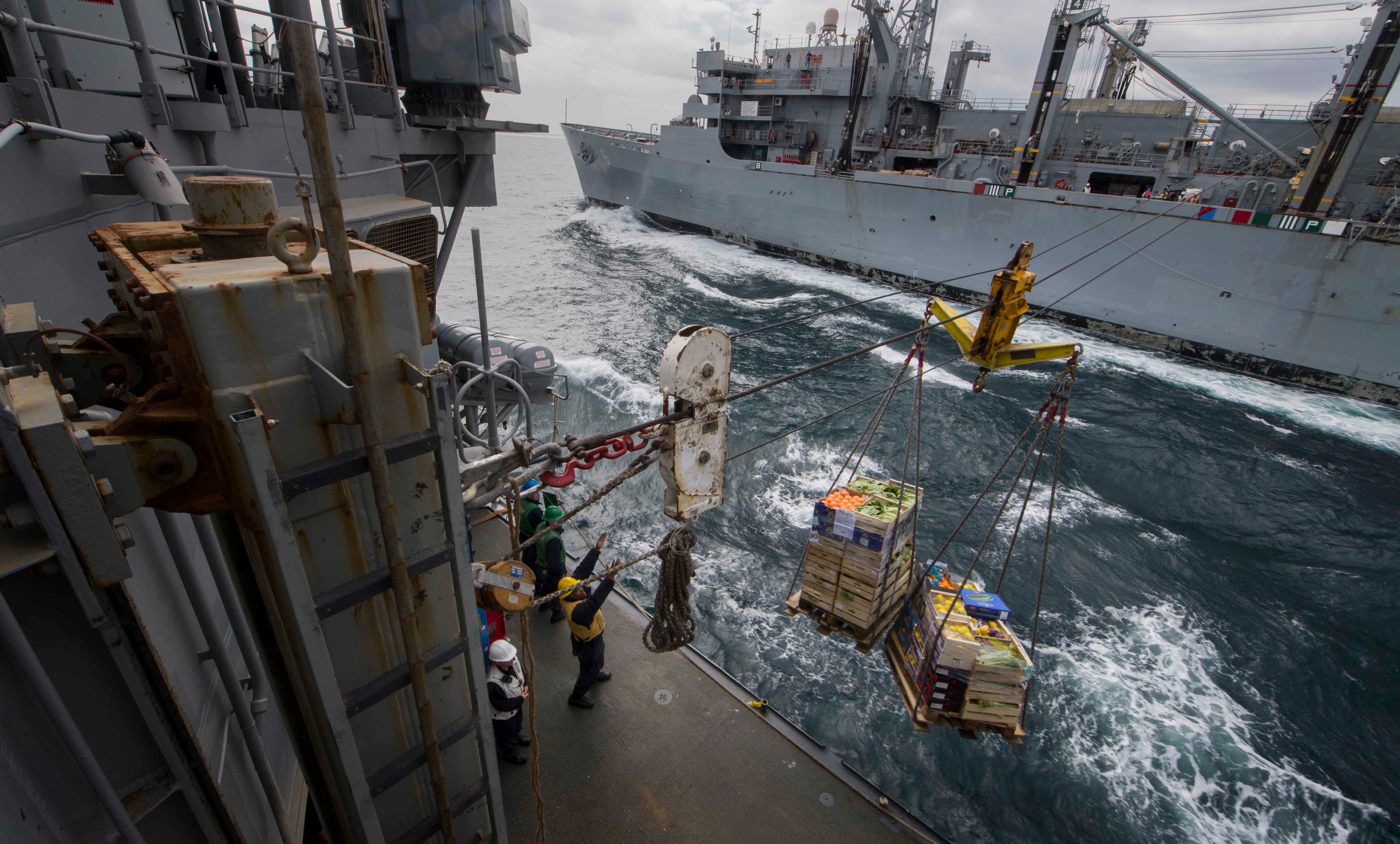Any future war against a conventional military would require rapid transportation of massive amounts of troops and gear via the Navy’s surge sealift forces, a capability that has not been in great demand during America’s asymmetric Iraq and Afghanistan wars of the 21st century.
But this week, the head of the House Armed Services Committee’s subcommittee on seapower and projection forces voiced concern about the state of that fleet.
The concerns come as lawmakers and the Pentagon seek to rebuild and fortify the military’s ability to fight a possible conventional war against a resurgent Russia, ascendant China or belligerent North Korea.
“I’m concerned about the Navy’s enabling forces, and specifically the surge sealift forces,” Rep. Rob Wittman said at a budget hearing Tuesday. “Our inability to provide a more responsive surge sealift will place soldiers’ and Marines’ lives at risk in a future conflict.”
When troops can’t get to the battle in time, the Virginia republican noted, “you need to fight your way in.”
“We have seen the casualties of such a strategy in prior conflict,” Wittman added, who called the vital surge sealift force “antiquated and insufficient.”
He criticized the state of the sealift force while taking to task the Navy’s “inability to act and embrace a bold ship building vision.”
The Pentagon’s inspector general announced in December that it would investigate whether Military Sealift Command had ensured that pre-positioned ships had been getting proper maintenance.
That was preceded last summer by a Government Accountability Office report that found the surge sealift fleet was showing signs of readiness decline.
RELATED

Wittman said such ships would be critical for not only getting troops to the fight, but sustaining them as well.
The ready reserve fleet’s 46 ships have an average age of 43 years, he said.
“Old ships, very challenging to maintain,” Wittman said. “By the end of this year, we will be the only country on the face of the earth that will continue to maintain and operate steam plants in ships.”
Marine Corps Lt. Gen. Robert Walsh, the head of Combat Development Command, said during the hearing that “we’re really kind of getting to that ragged edge.”
“That assault follow-on capability, that flow-in force or the surge forces…I think that’s that area where you talked about the age of the force is I think what we’ve got ourselves really concerned with,” Walsh said.
While the services can likely meet the need today, the capability will continue to degrade over time, he said.
“Probably by the mid-20s we’re not going to be able to meet the requirements we’ve got,” Walsh said.
The Navy is looking at several options for shoring up the deficiencies, Vice Adm. William Merz, deputy chief of naval operations for warfare systems, told the subcommittee.
Those options include buying foreign ships, service life extensions and new construction, he said.
Wittman noted that surge sealift ships are not as sexy as buying new boats or warships.
“I would argue if history is any lesson to us, that the support element of the Navy is as critical as the warship component, and especially in a contested environment today which creates a whole other challenge for us,” he said.
Walsh said that ships like the expeditionary sea base, or ESB, can offer a similar capability in the future as an afloat staging base.
Squaring away capabilities like surge sealift or hospital ships also sends a message to the rank-and-file that they would be looked after should a big war break out, Wittman said.
“It’s great to give them great training, but if they’re out there at the tip of the spear…and for the first 30 days they’ve got everything they need, but after that things start to tail off, that really becomes an issue,” he said.
Geoff is the managing editor of Military Times, but he still loves writing stories. He covered Iraq and Afghanistan extensively and was a reporter at the Chicago Tribune. He welcomes any and all kinds of tips at geoffz@militarytimes.com.




